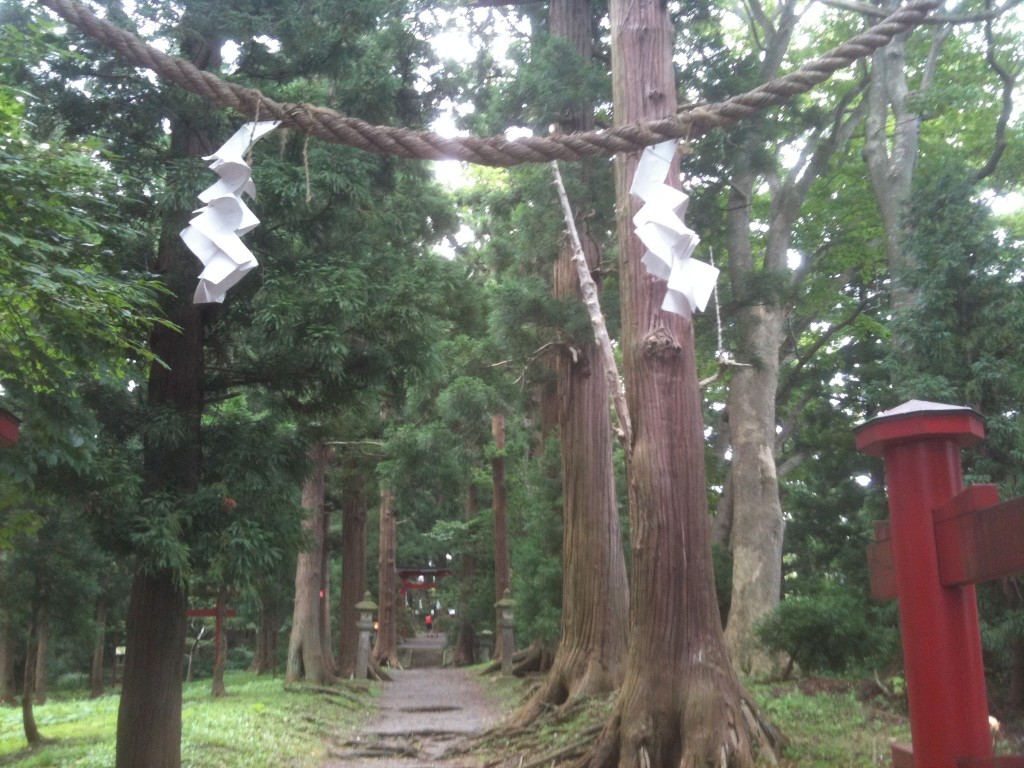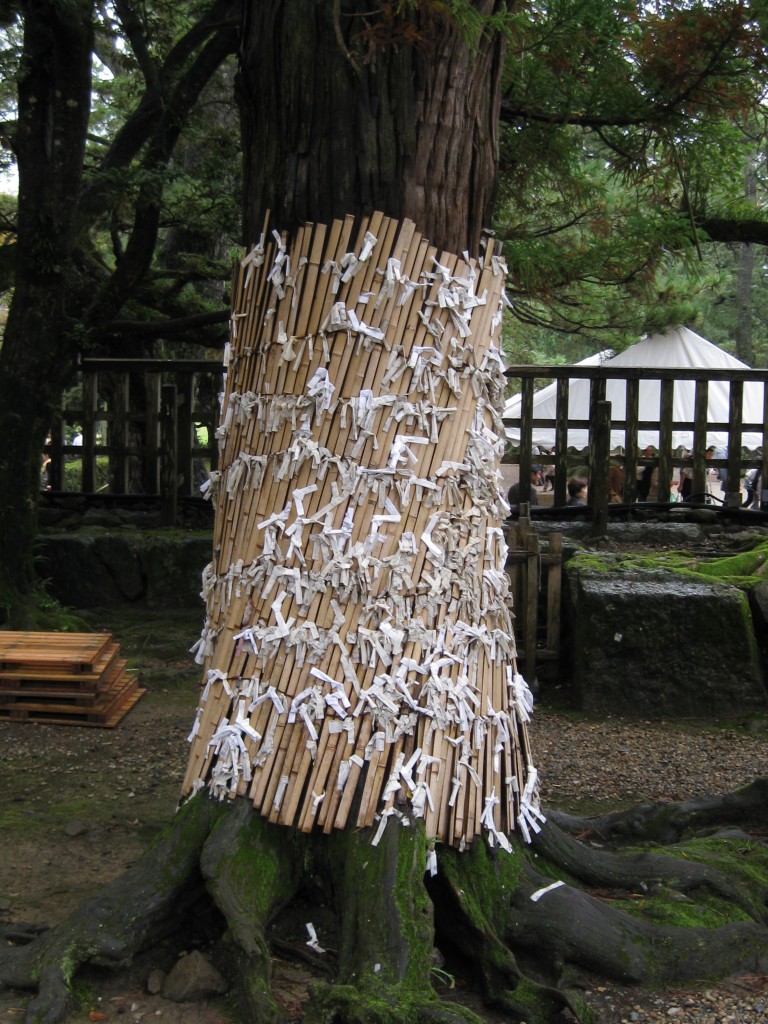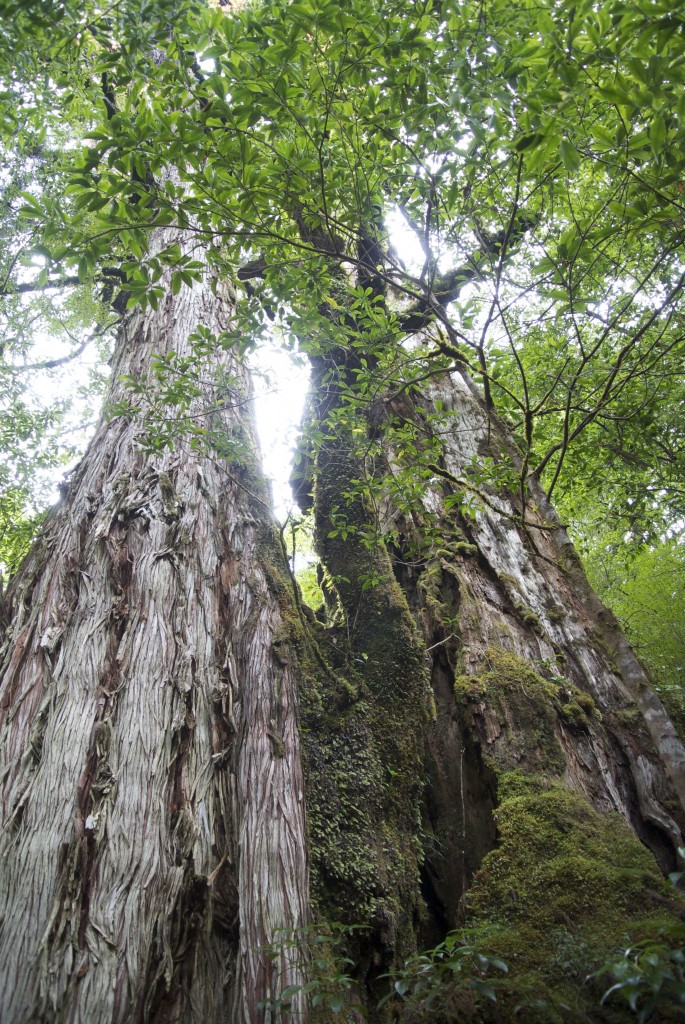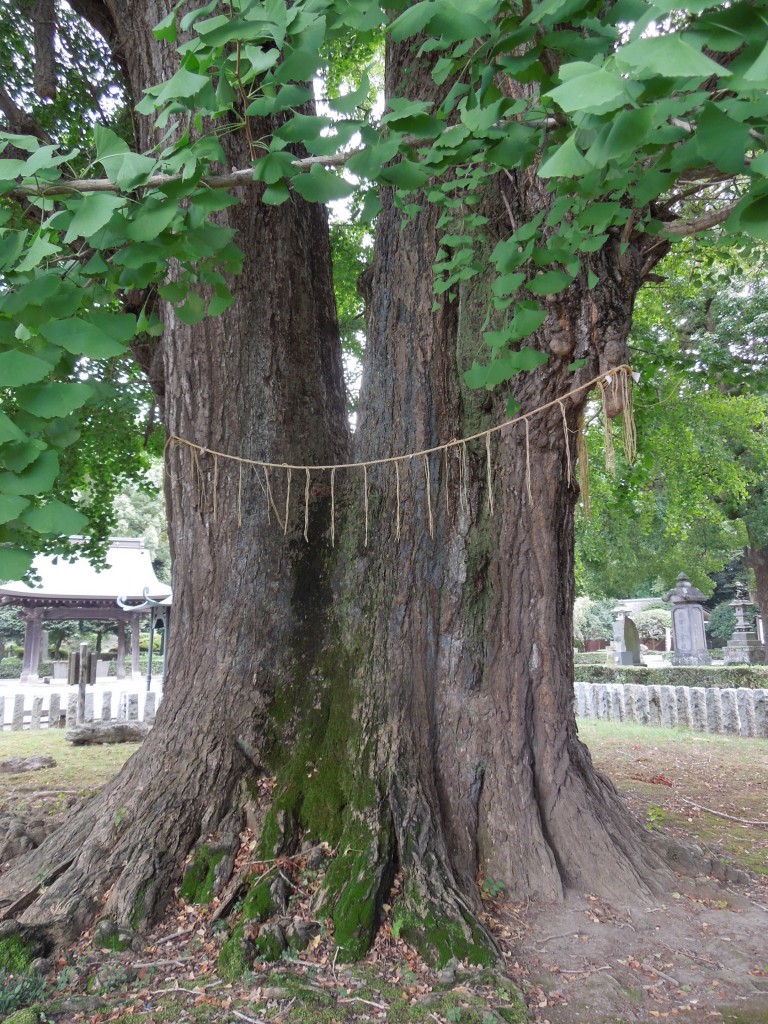
Woods as a source of awe and spirituality
Woods were mankind’s earliest temples, and trees pointed the way to heaven. Wooded mountains held spiritual mystique, for the abode of the gods was shielded by a forest of leaves. As a country of forests, it’s no wonder that trees have played a prominent part in Japan*s spirituality. Naturalist Kevin Short here provides some interesting facts about the country’s situation, and how the environment has been disastrously affected in modern times by a rapacious desire for profit over ecology.
******************************************************
NATURE IN SHORT / Japan is one of the most densely forested countries on Earth
Kevin Short / Daily Yomiuri Columnist

One of Japans thousands of sacred trees
Japan is certainly a land of trees and forests. Even today, 68.5 percent of the national land is covered with forest. This figure is third behind Finland (72.9 percent) and Sweden (68.7 percent), and over twice the world average of 31 percent. An estimated 1,000 species of woody plants live in Japanese forests, which is about the same as the figure for all of North America.
One reason for the amazing diversity of Japanese trees can be found in geologic history. The Japanese islands were almost completely free of ice during the last glacial period. In contrast, until 10,000 years ago much of northern and western Europe was covered by glaciers up to a kilometer thick.
Geographical conditions also help support sylvan biodiversity. With warm oceans currents flowing on both sides, the Japanese archipelago is blessed with a mild, wet climate that is ideal for tree growth and forest development. In addition, the islands stretch a long way in the north-south direction, and climatic zones range from subtropical in the Ryukyu Islands to subarctic in parts of Hokkaido.
Botanists understand and document plant diversity using a formal taxonomic system. Trees are first divided into two major groups, gymnosperms and angiosperms, based on the type of flower and fruit. Gymnosperms include all the trees we normally call conifers, and angiosperms the ones we think of as broad-leaves. Some trees, such as the ginkgo, however, have wide leaves but are actually gymnosperms.
The vast majority of Japan’s native tree species are broad-leaves, and most of the nation’s natural forests are dominated by broad-leaves. The general idea is that angiosperms, which sport a more advanced flower structure, enjoy a competitive advantage over gymnosperms. All else being equal, angiosperms will thus tend to monopolize favorable environments, leaving the gymnosperms to get by in marginal habitats such as deeply shaded valleys and exposed ridges.
But today, as anyone traveling around Japan can verify at a glance, the hills and lower mountainsides in most areas of the country are totally dominated by conifers. In fact, a full 40 percent of the nation’s forests are pure stands of conifers. These are not natural forests at all, but commercial timber plantations.
In many prefectures, however, this figure is well over 60 percent; it’s even higher on hills and lower mountainsides surrounding the major cities. In late February and early March, immense clouds of yellow-green sugi [cryptomeria] pollen dust float down onto the urban areas, like some amorphous monster out of a kaiju science fiction movie. The number of people suffering from sugi pollen allergy is estimated at over 20 million.
Most of these sugi plantations were established in the years following the Pacific War, when demand for lumber for rebuilding the destroyed towns and cities was high. Entire hillsides and even watersheds were stripped bare of their diverse natural broad-leaved forests, and completely replanted in tight rows of sugi. Several decades later, however, tariff reductions made cheap imported lumber products widely available, and the price of sugi wood dropped dramatically. As a result, many plantations have since been abandoned as commercially unworkable.
Cryptomeria is a truly magnificent tree, and properly thinned and managed sugi plantations form a valuable wildlife habitat of their own. The sheer extent of the plantations, however, has placed Japan’s magnificent natural broad-leaved trees and forest ecosystems in grave danger of extinction.

A pair of Yakushima cedars "Mother and child"


As well as sugi’s threat to the wellbeing of Japan’s naturally occurring varieties of trees, and the discomfort they cause the human population (including me– and this year’s supposed to be particularly bad), they cause discomfort to many species of animal, too. And animals can’t conveniently go to the doctor for medication to help deal with it. John, do you know what the projected future is for this exotic sugi invasion? Does anyone see the situation improving at all in the years to come? Are there any proposals for actions to help deal with the problem? Or is there no other recourse than to invest in facial tissue manufacturing companies?
Hello there, I’ve heard that the government policy, unbelievably, is to continue planting sugi rather than mixed forest plantation, though they’re investing in low-pollen producing trees. “However, devastation of the forestry industry and the diminishing number of forestry workers as result of cheap and high quality imports has made actual implementation of measures in forest plantations slow. In 2005, the Forestry Agency announced plans to plant 600,000 low pollen-producing cryptomeria trees over the following five years. Nonetheless, cryptomeria forests in Japan cover a total of 45,300 square kilometres so a meaningful migration to such varieties proves to be a considerable challenge.” (Wikipedia) [The site incidentally says that radiation from cellphones might worsen allergies, so refraining from too much use might be an idea.]
Meanwhile, a private blogger’s website offers this advice for allergy sufferers…
How can you manage?
Refrain from going out especially during the time pollen is really abundant (around 1:00-3:00PM, depending on area)
Clean the house ( vacuum carefully and wipe surface with wet towel)
Gargle with a mouth wash and wash your face when return to your house
Remove the pollen from your clothe or pets when you come back to your house
Close the windows and doors
Don’t dry the clothes outside
Wear a mask and glasses. Choose a coat with a slick, non-porous surface
Avoid consuming too much high protein foods, alcohol, and spicy foods, smoking
Avoid your stress as much as possible
A bit more
シソ油 Perilla oil…..It includes α-Linoreic acid, which contains an unsaturated fatty acid and some flavonoids. It’s said that α-Linoreic acid and these flavonoids suppress the immune system and work for decrease allergy symptoms.
甜茶 Tencha…..It’s a Chinese tea from the family Rosaseas . It includes Tencha polyphenol (GOD polyphenol) and it works as an antihistamine and obstructs the action of cycloxygenase which occurs inflammation.
That’s really unfortunate to hear. And a bit ironic, in light of the racial/nationalistic issues you brought up in your recent “Chosen race” post. I see Sugi trees as the ultimate foreign invader.
Thank you for the allergy suffering tips! I actually had a weird flare-up this week– first time in my life that allergies made one of my eyes puff up like I’d been stung by a bee. I thought for sure it was conjunctivitis, but after a visit to a doctor, apparently just allergies. He said this year is supposed to be a particularly tough year.